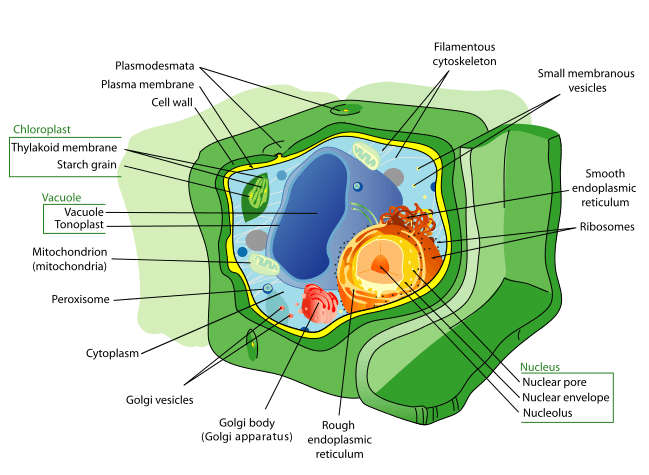What Is a Cell? Prokaryotic and Eukaryotic Cells
Episode #1 of the course How the cells work by Luis Francisco Cordero
Welcome! Over the next ten days, you’ll learn what exactly the cells are and how their minute organs (or organelles) comply with the tasks required for multicellular life to thrive: from basic things like molecule digestion to more complex ones like sexual reproduction.
Today, we’ll start from the very basics. We’ll talk about the origin of cells and the difference between prokaryotic and eukaryotic cells.
We Are Many
Around 4.5 billion years have passed since Earth was formed, and we think that the first cell made its appearance here 3.8 billion years ago.
Although we have no certain way of knowing all the events that preceded this debut, it is probable that some organic molecules might have been able to form and assemble into larger, more complex macromolecules. Such is the case of polypeptides building up from simple amino acids or long strings of nucleic acids. The latter class possesses an exceptional property: It can self-replicate.
What this seemingly simple characteristic permits is the notable process that constitutes the secret of life creation, as well as its continuous adaptation capacity, which results in the most important self-preservation feature it has: evolution.
The Cell
Describing it in simple terms, a cell is an organized collection of organic molecules that has the ability to replicate itself. Some of them are free living, and some assemble themselves, giving rise to multicellular organisms such as ourselves.
Cells are composed of many parts, which include an outer membrane, called the plasma membrane; cytoplasm, an internal medium that serves many functions; and many organelles, or “little organs,” which have specific functions that help sustain the whole cell.

Structure of a plant cell
The different organelles and compartments inside a cell work by letting it acquire organic matter, digest it, and assemble the building blocks into other complex molecules following precise instructions, modifying and transporting them to proper locations, ensuring their proper functioning, and disposing of them when the time is due. In the next lessons, we will cover the main characteristics and jobs that these tiny cellular parts feature.
Prokaryotic versus Eukaryotic Cells
Perhaps this is the greatest distinction that can be made between two things we can consider to be “alive.”
Prokaryotic cells are the more primitive ones. Their genetic material, i.e. the recipe that governs which proteins are made, resides in the cytoplasm. As we will see later in the course, the cytoplasm is like a pool inside cells, where many of the little cellular machinery elements perform their jobs. Prokaryotic organisms have their genetic material swimming in there as well.
At the same time, eukaryotic cells have specific compartments. One, and arguably the most important of these compartments, is the cell nucleus, which constitutes a membrane-enclosed place where genetic materials in the form of nucleic acids, called DNA—i.e. deoxyribonucleic acid (we will learn more about this in Lesson 4)—are held, pampered, and protected.
Bacteria and archaea are prokaryotic organisms, while plants, fungi, animals, and of course, humans are eukaryotic ones.
Did You Know?
Robert Hooke discovered the cells and published his findings in 1665, as part of the amazing book Micrographia. He described there how he “took a good clear piece of Cork, and with a Pen-knife sharpen’d as keen as a Razor, cut a piece of it off, and thereby left the surface of it exceeding smooth, then examining it very diligently with a Microscope, [he] thought [he] could perceive it to appear a little porous.” Later on, he called these pores, “cells,” from the Latin word, “cella,” meaning small room.
Key Takeaways
Many billions of years ago, organic molecules emerged on our planet and eventually assembled into complex things capable of modifying their surroundings by acquiring, breaking down, and re-arranging other molecules to their advantage, ensuring their continuous presence and evolution.
While all cells are composed of a membrane that limits their contents from the surrounding environment, some of them also have high-complexity internal compartments that allow for more highly ordered functions. The more notable of this, the nucleus, is only present in eukaryotic cells and is used to enclose and protect the genetic code. The cells without such compartments are called prokaryotic cells.
Tomorrow, we will start exploring a cell’s minute and delicate parts, starting from its outermost one: the plasma membrane.
Learn Something New Every Day
Get smarter with 10-day courses delivered in easy-to-digest emails every morning. Join over 400,000 lifelong learners today!
Recommended book
Life’s Ratchet: How Molecular Machines Extract Order from Chaos by Peter M. Hoffmann
Share with friends

